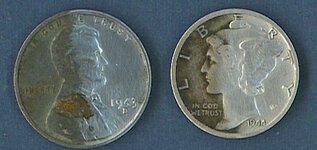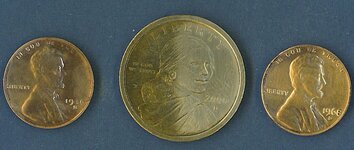L
lohi
Guest
I have been trying to find a safe way to clean my coins. Out of curiousity I decided to try to use my dremel. I used the nylon buffer and the rouge polishing compound. They come out so shinny. I don't think this messes them up any. Let me know what you think. I know these pictures don't do them justice.






 I could have the term wrong. It involves similar cleaning and very fine scratches. Some such that you don't see them as scratches as they are so fine. If I recall, it is noticable in the halo effect that some coins have resulting from the circular buffing.
I could have the term wrong. It involves similar cleaning and very fine scratches. Some such that you don't see them as scratches as they are so fine. If I recall, it is noticable in the halo effect that some coins have resulting from the circular buffing. 


